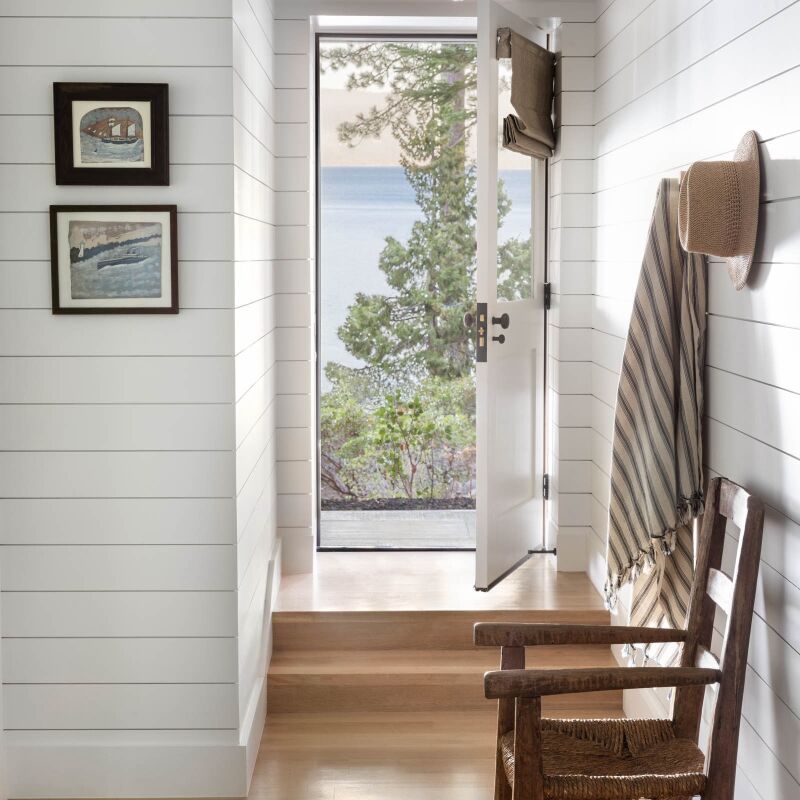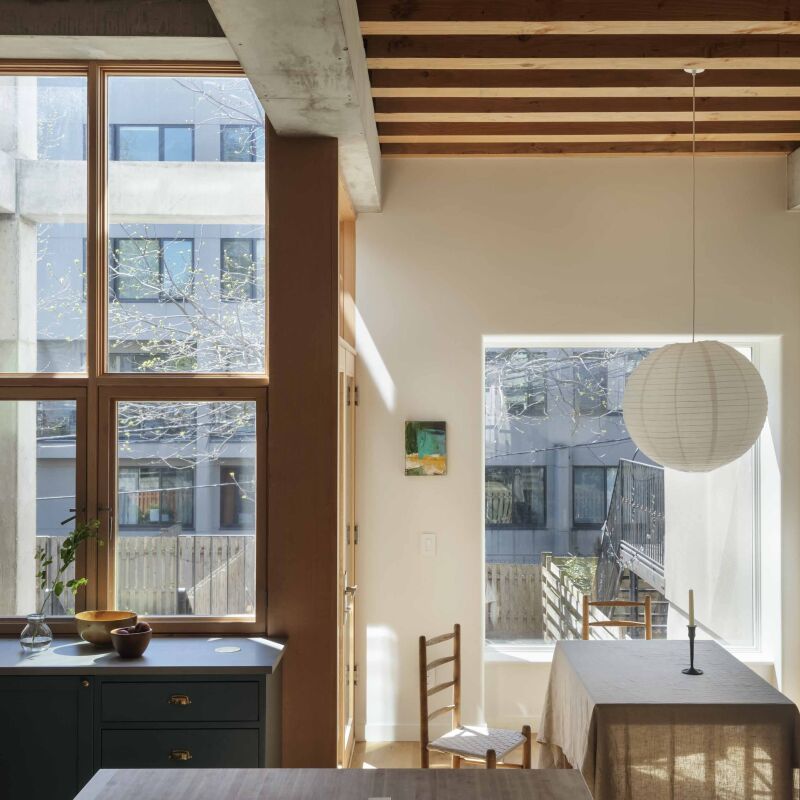We recently published a post all about crown molding—you know, the trim installed along the top of walls to add decoration and, not incidentally, hide the often messy line where walls meet ceiling (see Remodeling 101: What Is Crown Molding? Plus, What You Need to Know). We still had lots more questions about moldings, so we went back to architect James Dixon, a self-professed “moldings fan” who specializes in restoring Manhattan apartments and building and renovating country houses (he’s also a member of the Remodelista Architect & Designer Directory). This time we’re tackling door and window casings, the trim around interior doors and windows. Read on for a quick guide, whether you’re remodeling or building new.

First, a refresher at the other kinds of molding out there:
Besides crown molding, what other types of interior molding are there?
A house can have many different moldings, Dixon explains. One type is the trim, or casings, around doors and windows. Baseboards are also molding, and sometimes molding is installed on walls as chair rails and picture rails—or just to delineate a space. (More on those in upcoming posts.)
In most cases these various types of molding are less elaborate than crown molding, which can be extraordinarily detailed. And they’re usually made of wood, and sometimes of a composite like MDF (medium density fiberboard).

Door and Window Casings
What are door and window casings?
This trim serves the same function as crown molding, says Dixon: “It started as a way to cover the gaps when you have a hole in the wall for a window or door, and later acquired a more decorative character.” The trim also protects the plaster walls, especially around an interior doorway. While today most door and window casings are made of wood, historically the material was stone or marble.

Should these casings look like other molding in the room?
There’s a whole theory behind choosing and positioning molding, with very specific rules to follow. (You may not have to consult the “bible,” C. Howard Walker’s 1926 Theory of Mouldings, but it’s still in print if you need it.) “In order not to have molding look odd, you have to consider things like room size and ceiling height,” says Dixon. “All the trim in a room should be part of the same family, with similar detail and proportions. If you have elaborate crown molding and very simple door casings, for example, it’s not going to feel right.” But once you know the rules, he adds, you can get creative.

What color should I paint my door and window casings?
That’s up to the homeowner, Dixon says. “The classic method is to use white for ceiling and trim (baseboards and window and door casings), and then paint the wall a color or add wallpaper. That’s a nice way to tie all the elements together. But I like to see all the different trim painted the same color as the walls—especially if the room has a lot of ornament, or very detailed casings. Then everything reads a bit more simple.”
What are some tricks for using door and window casings?
“The Italian architect Andrea Palladio was a master at putting false windows on a building’s facade to create symmetry,” says Dixon. “You can do the same thing inside with moldings—say, adding closed shutters to create the illusion of a window where none exists.” Or, if you have a doorway on only one side of a room, you can put molding on the facing wall to make the space look like a second doorway.

Is there anything else I should know about door and window casing?
And there are still more types and styles of molding. If you’re curious, check out Dykes Lumber Co., founded in Manhattan in 1909. “The Dykes catalog has every kind of molding in every category,” says Dixon. “For people who live and breathe this subject, it’s considered the industry bible.” Along with Theory of Mouldings, that is.
For more on painting trim, see Expert Advice: Three No-Fail Color Palettes for Walls, Ceiling, and Trim.
And for more Remodeling 101, see:
- Remodeling 101: What Is Crown Molding? Plus, What You Need to Know
- Remodeling 101: A Guide to the Only 6 Wood Flooring Styles You Need to Know
- Remodeling 101: A Guide to the Only 7 Types of Tile You Need to Know
Frequently asked questions
What is door and window trim casing?
Door and window trim casing refers to the decorative molding or trim that surrounds doors and windows. It serves both functional and aesthetic purposes, providing a finished look while also covering gaps between the wall and the door or window frame.
What are the different types of door and window trim casings?
There are various types of door and window trim casings, including plain casings, craftsman or mission-style casings, colonial casings, and Victorian-style casings. Each style has its own distinctive characteristics and can complement different architectural and design aesthetics.
How do I choose the right door and window trim casing style?
When choosing a door and window trim casing style, consider the architectural style of your home, the overall design aesthetic you want to achieve, and the scale and proportion of the trim in relation to the space. Research different styles, gather inspiration, and select a casing that harmonizes with your vision.
What materials are commonly used for door and window trim casings?
Door and window trim casings can be made from a variety of materials, including wood, MDF (medium-density fiberboard), polyurethane, or PVC. Wood is a popular choice for its natural beauty and ability to be stained or painted. Other materials offer durability, affordability, and resistance to moisture or rot.
Can I install door and window trim casings myself?
Yes, door and window trim casings can be installed as a DIY project, especially if you have some experience with carpentry and basic tools. However, it's important to ensure accurate measurements, make precise cuts, and properly attach the trim to achieve a professional-looking result.
What tools are needed for installing door and window trim casings?
The tools needed for installing door and window trim casings typically include a miter saw or miter box, a coping saw, a measuring tape, a level, a nail gun or hammer and nails, a putty knife, and a caulk gun. Additionally, you may need wood glue, sandpaper, and a paintbrush or roller if finishing or painting the trim.
How do I measure and cut door and window trim casings?
To measure and cut door and window trim casings, start by measuring the length and width of each side of the door or window frame. Use a miter saw or miter box to cut the trim at 45-degree angles for the corners. For more intricate cuts, such as coped joints, a coping saw can be used to create a precise fit.





Have a Question or Comment About This Post?
Join the conversation